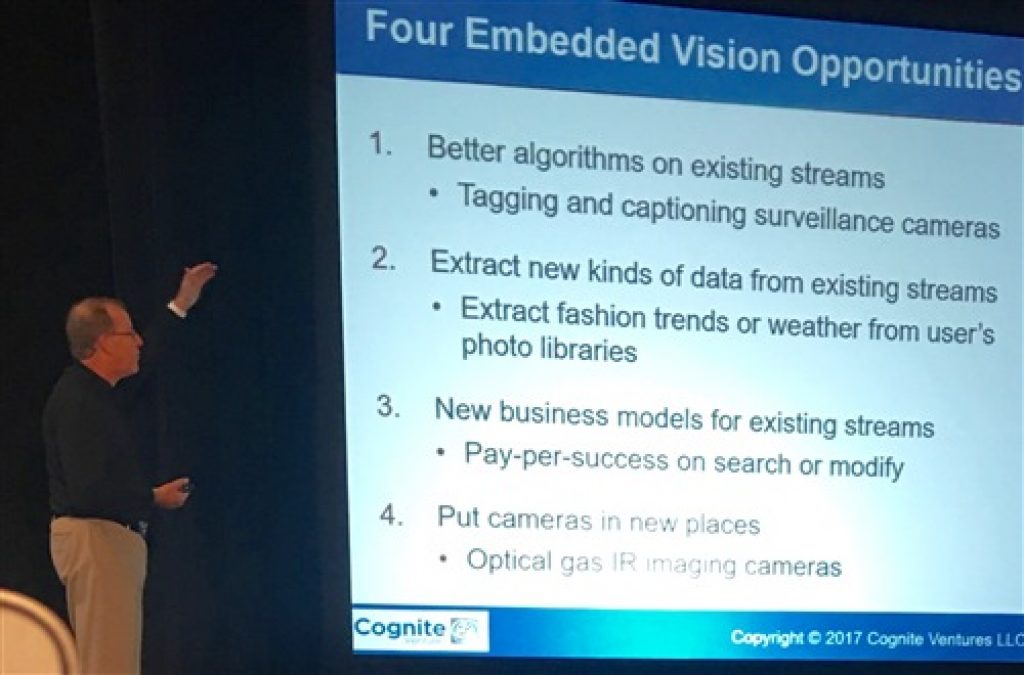This blog post was originally published at Cadence's website. It is reprinted here with the permission of Cadence.
The last presentation that I'll cover in its own post from this year's Embedded Vision Conference will give you plenty of homework to do between now and next year's Embedded Vision Conference, where you can book a slot to present your nascent company. Chris Rowen presented his experience under the title How to Start an Embedded Vision Company. He has started some companies (he helped start MIPS and was the founding CEO of Tensilica before doing the CEO/CTO switch). However, as he pointed out, there is no fixed formula for how to start a company and anyone who says that there is, is either a fool or lying.
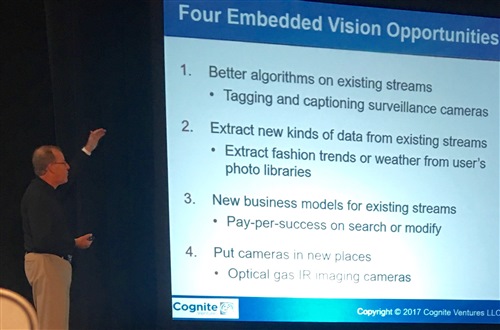
Chris left his job as CTO of Cadence's IP division. Actually, he is still helping them in the area of vision and neural nets, so maybe he needs a presentation on how to get out of an embedded vision company. He created a company called Cognite Ventures and, for now, has been surveying the scene looking for an opportunity to do something interesting in the vision/AI area. He pointed out that there are more sensors than people, but nobody wants to store all the data, it is just useless pixels. So there is a drive to do turn that raw vision data into useful information.
The Lean Startup
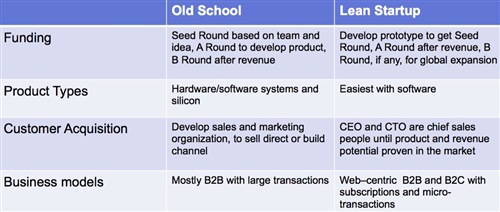
The fashion in the VC world today is for the lean startup. Instead of starting by raising money and then developing a product, it is done the other way around. You develop a product and only raise money when you start to have revenue and need to scale. The idea is to get "ramen profitable", which means that all the founders are sharing an apartment, which is also the office, and living on ramen. This does sort of assume you are about 23 with no family or other responsibilities. It also only really works for software and internet companies, where the only hardware needed are a few laptops and an account with Amazon's AWS. "It's really hard to tape out an SoC and then raise money," Chris said, which has to count as the understatement of the summit. It is actually only marginally easier to raise money and then tape out an SoC, by the way. VCs are just not that keen on anything that involves hardware, they all want the next Instagram or Airbnb.
Before getting to embedded vision in particular, Chris covered general aspects that you want if you are going to have any chance of creating a successful startup:
- Depth of skills: You need to cover a diversity of skills such as hardware, software, marketing, sales, fundraising, strategy, and infrastructure
- You need to be world-class in one or two essential disciplines
- You need enough experience to avoid rookie mistakes, especially knowing the difference between potholes and an existential crevasse
- Uncompromising honesty and commitment
- Your product needs uniqueness in at least one major dimension
- …and of course you and your team need to be able to make the product work
- On the other hand, it needs to be hard or others will learn from you and steal your market
One thing that I know from my own involvement in startups is that you have competition. At the very least, the competition is whatever people are doing already, and if they are not doing something similar already then you don't have a market.
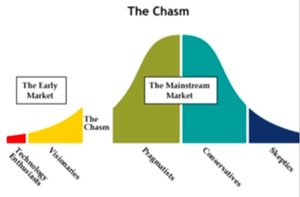 If you've not read it, even if you don't plan on starting a company, you should read Crossing the Chasm. This book gets to the heart of a paradox that the people who buy your product really early on tend to be geeks who love new stuff. The mainstream market doesn't love new stuff, it just wants to get stuff done and, if you are lucky, will buy something despite it being new, not because. This has a couple of effects. It can look like you are getting somewhere when you have a few early customers. Worse, they are buying for reasons that may be very different from what the mainstream market will eventually value. Having said that, you do need early customers to fund the discovery process and get the product rounded out, despite them not being representative of the later users. The recipe for success to cross the chasm is to completely satisfy some subset of customers and then broaded (for example, Documentum got early success by focusing only on flawlessly managing the documentation process for FDA drug approval and ignoring other markets).
If you've not read it, even if you don't plan on starting a company, you should read Crossing the Chasm. This book gets to the heart of a paradox that the people who buy your product really early on tend to be geeks who love new stuff. The mainstream market doesn't love new stuff, it just wants to get stuff done and, if you are lucky, will buy something despite it being new, not because. This has a couple of effects. It can look like you are getting somewhere when you have a few early customers. Worse, they are buying for reasons that may be very different from what the mainstream market will eventually value. Having said that, you do need early customers to fund the discovery process and get the product rounded out, despite them not being representative of the later users. The recipe for success to cross the chasm is to completely satisfy some subset of customers and then broaded (for example, Documentum got early success by focusing only on flawlessly managing the documentation process for FDA drug approval and ignoring other markets).
The Bay Area is an especially easy place for startups because we have startup infrastructure in the form of law firms, bankers, VCs, shared office space and so on. Everyone eats and drinks technology, and especially startups. Plus there are a large number of entrepreneurs who are happy to give you the benefit, or otherwise, of their experience. There are also lots of conferences (like, for example…hmm…the Embedded Vision Summit) that you can go to without needing to get on a plane.
Embedded Vision Startups
Finally, Chris got to his guide for Embedded Vision Startups. There are lots different places where vision performance can be affected: processors, data selection, training datasets, recognition algorithms, user interfaces, and more. It is obvious looking around the conference, or even just attending Jitendra's keynote, Deep Understanding, Not Just Deep Vision, that "neural nets have won" vision. They are powerful for both discrimination and generation tasks.
One of the big challenges (aka opportunities for your startup) is to create and repurpose data for training. Chris pointed out three:
- Continuous data bootstrapping from use, building up a good dataset from an initially poor one over time
- Visual simulators to train models, when real-world data doesn't exist or is too limited (for example, testing automotive crash avoidance algorithms with simulated crashes)
- Using big models to label data for smaller, specialized embedded models
New device types such as virtual reality headsets, or augmented reality headsets (see the Microsoft keynote on the Hololens), and, no matter which way you turn it is cars.
The hardware is changing. Moble apps processors such as the Tensilica Vision C5, or the NVIDIA Volta announced after the Embedded Vision Conference finished, are making new cost and power points possible. So there is opportunity in fitting algorithms to platforms.
In practice, real applications are rarely pure vision, they involve something else such as aggregating with other channels (radar and lidar, audio, MEMS) or complex decision processes for controlling robots, drones, and doing so in a safety-aware manner.
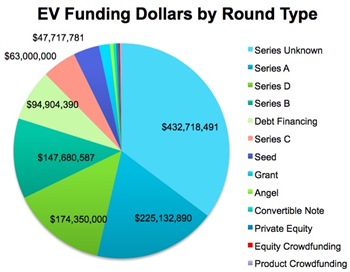 As part of his looking at the space, Chris had analyzed CrunchBase to look at funding for embedded imaging, video, and vision funding over the last years (from Q2 2012 to Q1 2017). There were 190 funding rounds reported, with $1.25B of funding. The average round sizes (and this is an imperfect categorization) were:
As part of his looking at the space, Chris had analyzed CrunchBase to look at funding for embedded imaging, video, and vision funding over the last years (from Q2 2012 to Q1 2017). There were 190 funding rounds reported, with $1.25B of funding. The average round sizes (and this is an imperfect categorization) were:
- Seed $870K (55 companies)
- Series A $8.3M (27)
- Series B and C $16M (13)
- Series D $35M (5)
Four Big Categories
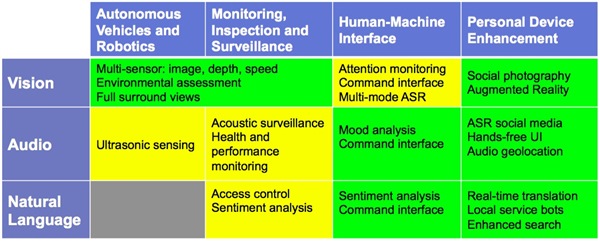
Four big categories of emerging embedded vision markets are:
- Autonomous vehicles and robotics
- Monitoring, inspection, and surveillance
- Human-machine interface
- Personal device enhancement
Observations, Caveats, and Warnings
Chris finished with some general advice from his experience over the years doing startups.
First, doing a startup is not for the faint-of-heart. It is an emotional roller coaster. You will find yourself doing all sorts of unexpected tasks (yes, cleaning the toilets can be a CEO function, as is customer support). Most startups do not succeed, at least not in the hit-the-ball-out-of-the-park way. It is also a marathon, not a sprint. Companies that exit after a year are exceptional, which is why they make the news. I am reminded of Mike Muller of ARM's comment to me once that "royalties always come later and are less than you expect". Startup revenue is like that.
Second, don't get greedy. Spread the equity across the core team to help keep essential cohesion.
Third, focus, focus, focus. Don't chase too many new ideas.
Deep learning is cool, but that is not enough for real success. Figure out the real need. I can't do better than to reiterate what Paul Graham of Y Combinator always says is the secret to success in any startup: "Build something other people want."
By Paul McLellan
Editor of Breakfast Bytes, Cadence

